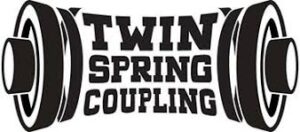 Industrial machinery runs 24/7 365, modern life demands a lot from this machinery and when the equipment is not running it costs money through lost orders, worker down time, and customer dissatisfaction.
Industrial machinery runs 24/7 365, modern life demands a lot from this machinery and when the equipment is not running it costs money through lost orders, worker down time, and customer dissatisfaction.
High speed couplings — couplings, beam and elastomeric, can only run at 4° misalignment before they cause equipment failure through increased vibration and the general failure of the couplings themselves, Twin Spring’s Coupling can run at high speed and high torque and still be torsionally rigid at 15°, meaning less downtime for flexible coupling replacement and less wear and tear on belts, shafts and other components.
Torque can be over a few hundred foot lbs, making Twin Spring couplings the right choice to replace those troublesome servo couplings.
Here are some of the flexible couplings in the industrial distribution:
Beam Coupling – a beam coupling is a high speed coupling machined from a single piece of metal, its is an industry standard when it comes to flexible coupling in the industrial marketplace but it also has its own shortcomings, the main one being the angle of what it can be used, 4°. That is the maximum it can be used at before its starts to create vibration and wear itself out, meaning equipment and component damage, downtime for replacement and/or repair. Beam couplings cannot handle much torque.
Bellows Coupling – A servo coupling very similar to the beam coupling, it is made of a number of pieces not a single piece like the Twin Spring Coupling, again like the Beam couplings they can only be used to a few degrees before starting to wear and vibrate. They also cannot take much torque either
Elastomeric Coupling – Another flexible coupling made up of 2 hubs and a flexible centre hub. This centre hub allows to flex but while it handles very high levels of torque it also can only work at a few degree.
Jaw Coupling –The last of the commonly used servo coupling, again low torque and small angle of misalignment but it is used for its vibration dampening center and jaw like in case of failure, this allows the coupling to remain functional but has to be replaced immediately.
Universal Joints – The uni joint is used in the industrial marketplace because of the need for companies needing more than the 4° typically found with servo couplings. Universal joint can run at high torque but are limited by the speed they can be used at and require constant maintenance due to their multi piece design. As the angle of usage goes up the vibration does as well which limits both speed and torque being transmitted. Lovejoy couplings are the most widely used but have the same disadvantages.
Twin Spring Coupling encompasses most of what we see in these servo coupling, torsionally rigid like the beam, bellows and jaw coupling , but with higher torque and higher angle of usage (up to 15° at high speed and high torque. Elastomeric coupling while they take large amounts of torque can only be used at small angles before they start to wear at the edges reducing its working lifespan.
The universal joints and Twin Spring Coupling are both more flexible than servo coupling but the Twin Spring coupling doesnt need to be constantly greased like a universal joint does, can run at higher speeds at higher angles of misalignment and with less vibration but also due to its one piece design will last longer.
*The constant use of conveyor systems and their numerous bearings and components means downtime is inevitable, even with a preventive maintenance plan.
*Encapsulation against foreign contaminants means longer lifecycles less downtime.
*Being encapsulated means it can be used in food or pharma industries with no risk of contamination.
*Intermittent force creates vibration which leads to equipment and product damage, but being attached permanently means no vibration, no equipment or product damage.
*Can be used in conjunction with other couplings and can be run at 0° up to 35° at full speed and torque
Twin Spring Coupling
www.twinspringcoupling.com

Leave a Reply